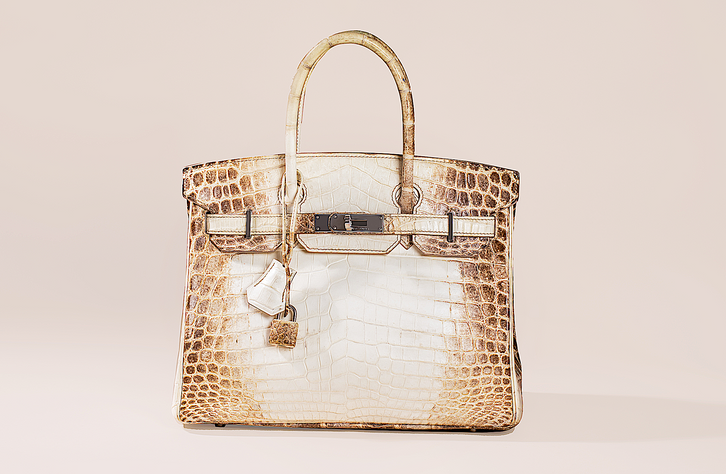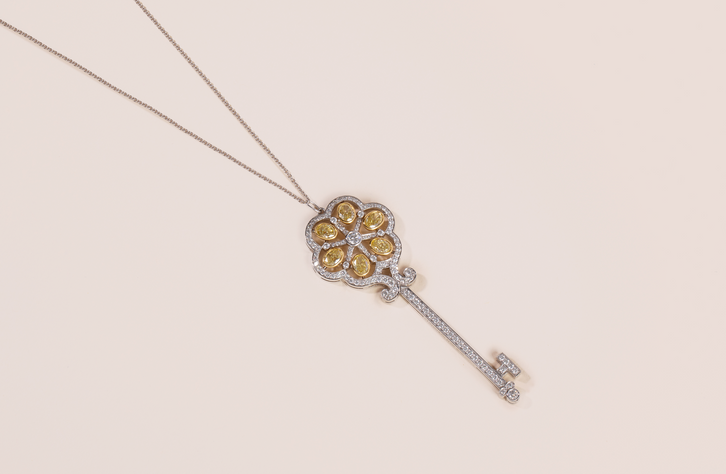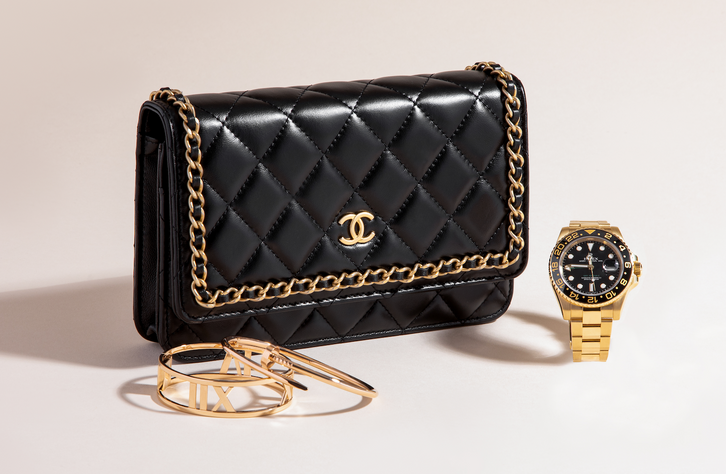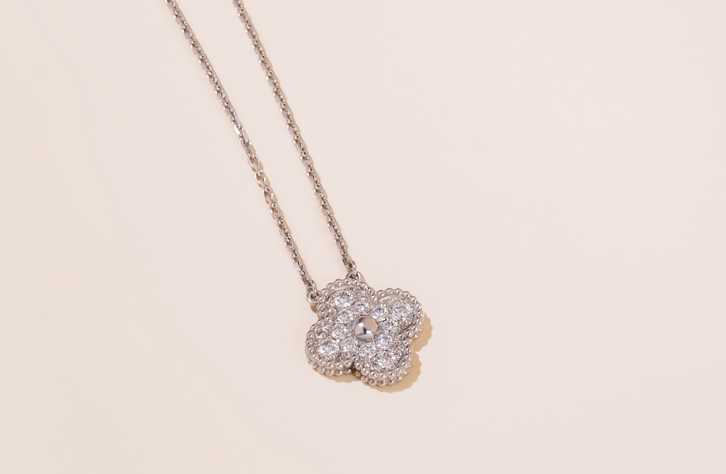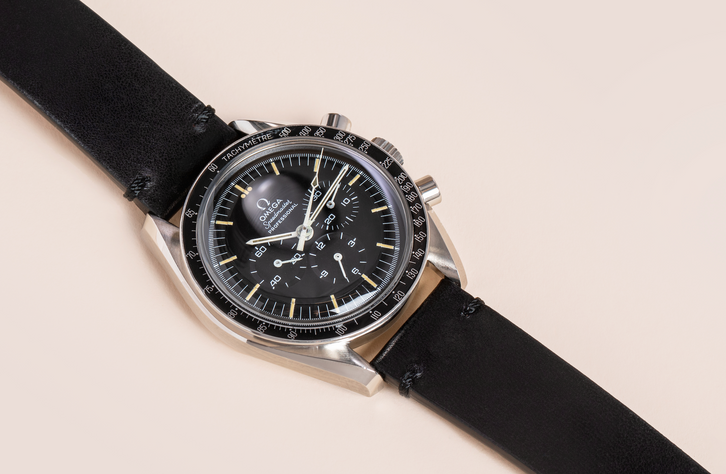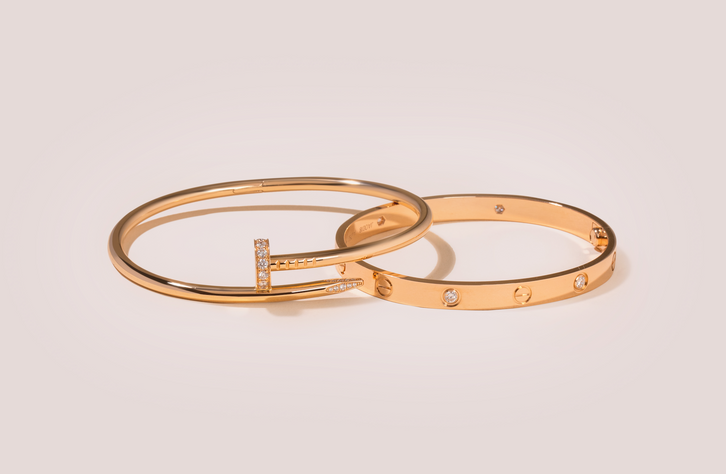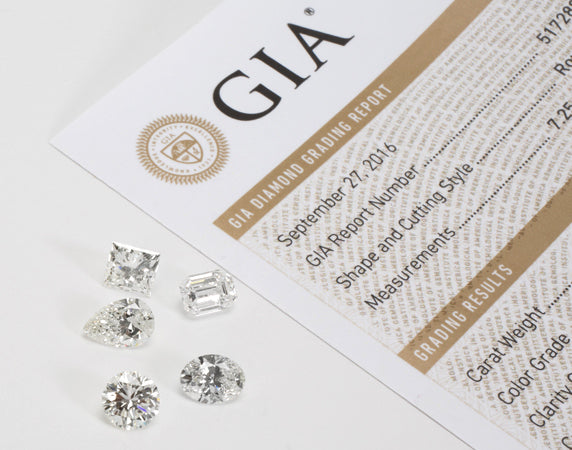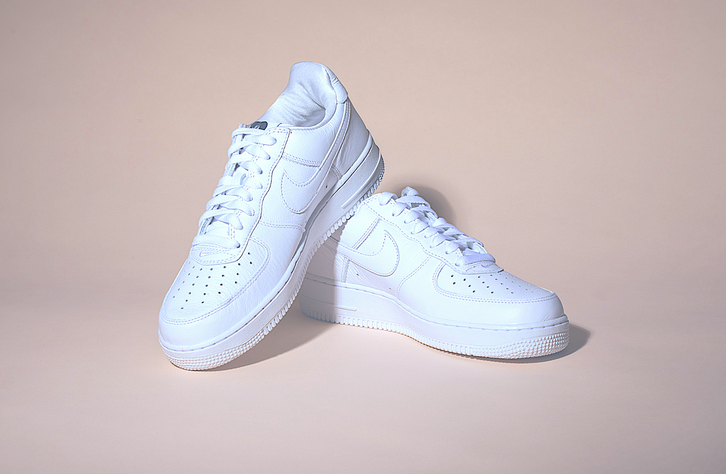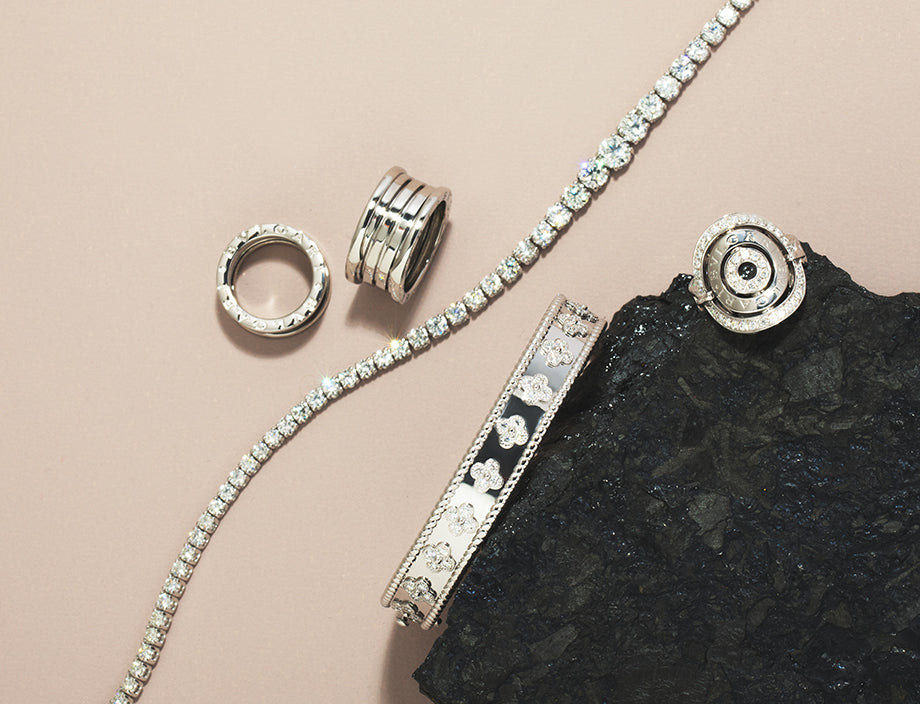But how was this system developed? And how important is it when buying or selling diamonds? We take a close look at the history of diamond grading over the years.
- The history of diamond grading
- How does the 4 Cs diamond grading system work?
- How can I get my diamond graded?
- Do all laboratories use the GIA diamond grading system?
- Is it important to have my diamond certified by a laboratory?
- Selling your diamond
The History Of Diamond Grading
Before the current diamond grading system was in place, there were a variety of methods used to quantify and qualify diamonds. In the 1800s, diamonds were sometimes graded using the letters A, B, and C to signify their quality. By the late 1800s, numerals like I, II, III, and IV were used to indicate a diamond’s quality, as well as AAA, AA, and A. Short descriptions were also used to express a diamond’s quality, but these descriptions varied from region to region. The inconsistent signifiers made quality control and diamond trading on a global level very difficult.
In 1931, the non-profit organization the Gemological Institute of America, known as the GIA, was founded by Robert M. Shipley. After many years as a jeweler, Shipley had noticed that the jeweler industry was lacking the standardization and scientific background that many other industries had. Therefore, he established the GIA with the mission to “ensure the public trust in gems and jewelry by upholding the highest standards of integrity, academics, science, and professionalism through education, research, laboratory services, and instrument development.” Shipley hoped to professionalize the jewelry industry via education.
In the 1940s, Shipley began informally teaching about the 4 Cs of diamond quality. Jewelers began using the terms, and the terms appeared in various jewelry industry literature during this time period. In 1953, GIA formally created its diamond grading system, known as the 4 C’s. The 4 Cs of diamond quality are the universally recognized diamond grading system still in use today. In 1955, GIA presented its first diamond grading reports, which became the hallmark of grading reports in the diamond industry.
In the 1950s, the GIA worked alongside De Beers to attract interest in the 4 Cs. De Beers adopted the concept and language of the 4 C’s grading system for use in their advertising campaigns, popularizing the grading system for the general public.
To this day, jewelers and the GIA use this same diamond grading system. However, the difference is that the gradings on a GIA report will be much more accurate than a jewelers. The reason being is that jewelers are not necessarily GIA trained gemologists, they may simply have a working understanding of diamond grades.
How Do The 4 Cs Of Diamond Grading System Work?
Now that we have reviewed the history of diamond grading, let's take a look at how the diamond grading system works. The globally accepted GIA diamond grading system is based on the 4C’s of diamond quality, or the four characteristics that will best help determine the value of a diamond. These four characteristics are:
Diamond Color
What is diamond color? Diamond color refers to the actual color, or tint, of a diamond.
How is diamond color graded? Diamonds are graded based on how they colorless they are, from D (colorless) to Z (slight yellow or brown tint):
- D, E, F – colorless
- G, H, I, and J – near colorless
- K, L, M – faint color
- N, O, P, Q, R – very light color (somewhat visible tint)
- S, T, U, V, W, X, Y, Z – light color (noticeable brown or yellow tint)
Gemologists will also look at fluorescence, or whether a diamond will emit visible light under ultraviolet light. Fluorescence is graded from faint to very strong. Fancy colored diamonds are not graded on the D to Z scale. They are assessed based on their hue (the actual color of the diamond and any secondary colors), saturation (how strong or weak the color is), and tone (how light or dark the color is).
Diamond Clarity
What is diamond clarity? Diamond clarity refers to how flawless a diamond is.
How is diamond clarity graded? Each diamond is assigned a clarity grade, based on the position, number, and visibility of flaws and blemishes:
- FL (Flawless) – No flaws internally or externally
- IF (Internally Flawless) – No internal flaws but some surface blemishes
- VVS1, VVS2 (Very Very Slightly Included) – Slight internal flaws that are not visible to the naked eye
- VS1, VS2 (Very Slightly Included) – Slight internal flaws that are slightly more visible, but still typically not visible to the naked eye
- SI1, SI2 (Slightly Included) – Slight internal flaws that may be visible to the naked eye
- I1, I2, I3 (Included) – Flaws that are visible to the naked eye
Diamond Cut
What is diamond cut? Cut refers to how well a diamond interacts with light, typically based on the proportion, symmetry, polish, brilliance, fire, and scintillation of the gem.
How is diamond cut graded? Each diamond is assigned a cut grade, from Poor to Excellent:
- Excellent – The diamond’s visual appeal is maximized. The diamond has the best dimensions and proportions to ensure the best light return.
- Very Good – Most of the light that enters the diamond is properly reflected, creating a visually appealing stone with much brilliance and fire.
- Good – Much of the light that enters the diamond is reflected.
- Fair – A lot of light escapes from the diamond. Sparkle is low.
- Poor – The diamond is poorly cut. Most of the light escapes from the bottom and sides of the diamond and the gem may appear dull.
Diamond Carat Weight
- What is diamond carat weight? Carat weight is the weight of the diamond, measured in carats.
- How is diamond carat weight graded? Carat weight is measured to the thousandth of a carat and then rounded to the nearest one hundredth. Specialized tools are used to ensure precise measurements.
How Can I Get A Diamond Graded?
If you are looking to find out the general characteristics of your diamond, you can head to a local jeweler who may be able to provide a free appraisal of the approximate features of your diamond. If you are looking to get more accurate information regarding the grading of your diamond, you can have your diamond certified by a laboratory such as the GIA, EGL, AGS, or HRD. For a fee, these laboratories will assess your diamond and provide a report for your stone.

Do All Laboratories Use The GIA Diamond Grading System?
The answer is no. While the GIA’s grading system is the most popular and widely accepted, other laboratories use different grading systems and terminology. The IGI, EGL, and HRD use similar grading terminology to the GIA, but the AGS, another top laboratory in the industry, uses a very different grading system. The AGS grades diamonds on a scale from 0-10 in terms of color, clarity, and cut. See how the GIA and AGS compare on their grading systems:
Diamond Color Grading Table:
| GIA | D | E | F | G | H | I | J | K | L | M | N | O | P | Q | R | S | T | U | V | W | X | Y | Z |
| AGS | 0 | 0.5 | 1 | 1.5 | 2 | 2.5 | 3 | 3.5 | 4 | 4.5 | 5 | 5.5 | 6 | 6.5 | 7 | 7.5 | 8 | 8.5 | 9 | 9.5 | 10 |
Diamond Clarity Grading Table
| GIA | FL | IF | VVS1 | VVS2 | VS1 | VS2 | SI1 | SI2 | I1 | I2 | I3 |
| AGS | 0 | 1 | 2 | 3 | 4 | 5 | 6 | 7 | 8 | 9 | 10 |
Diamond Cut Grading Table
| GIA | Excellent | Very Good | Good | Fair | Poor | ||||||
| AGS | 0 | 1 | 2 | 3 | 4 | 5 | 6 | 7 | 8 | 9 | 10 |
Is It Important To Have A Diamond Certified By A Laboratory?
When purchasing a diamond, especially one of 1ct+, we would always recommend that you purchase a GIA certified stone or at the very minimum have an appraisal or paperwork that documents the characteristics of the stone.
When selling your diamond, you do not need your diamond to be certified (unless it is a colored diamond).
Selling Your Diamond
If you are looking to sell your diamond, myGemma is here to help. We offer a free, simple and highly secure service for selling your diamond or diamond jewelry online. While we purchase certified and non-certified diamonds, we pay a premium for GIA-certified stones.
Simply fill out the online form and one of our in-house GIA trained gemologists will be in touch with a price quote. The entire selling process can take as little as 24 hours, from start to finish. Our hundreds of 5 star customer reviews and A+ BBB rating our testament to our exceptional customer service and strong prices.









